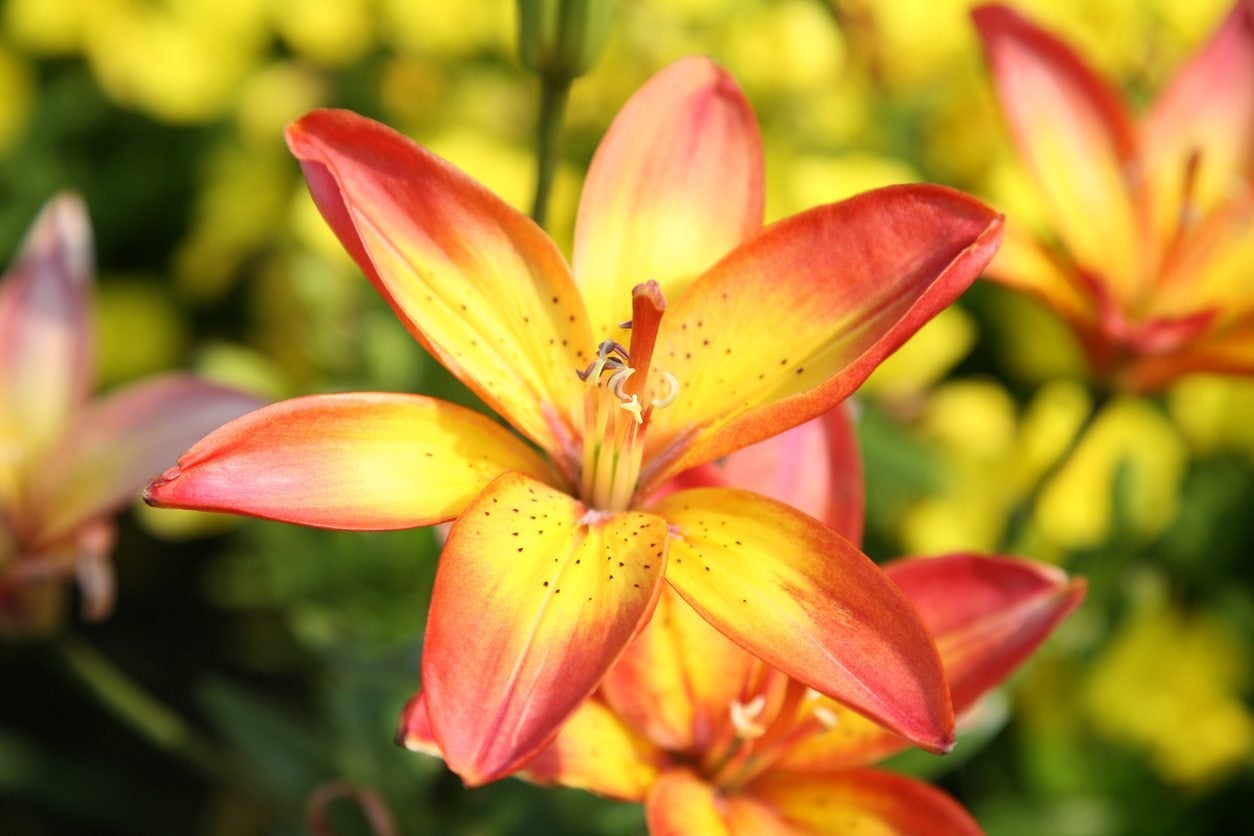Asiatic Lily Propagation: How To Propagate An Asiatic Lily Plant


A truly astounding plant, Asiatic lilies are a flower lovers prize garden denizen. Propagating Asiatic lily is commercially done by bulb, but if you have patience, you can save money and grow them from division, seed, or even leaves. This fascinating plant is very versatile in its reproduction and grows asexually or sexually. That leaves a lot of options for the intrepid gardener. Try reproducing Asiatic lilies in any one of these ways for a fun, interesting project that will yield more of the magical blooms.
How to Propagate Asiatic Lily Plants
Asiatic lily is probably one of the most recognized of the lilies. Its impactful flowers and tall, elegant stems pack a real punch in the perennial flower garden. Asiatic lily propagation from seed is time consuming and may take two to six years to develop flowers. A quicker method to increase your stock of these plants is by division. A vegetative method using leaves is also possible but takes some serious patience.
Seed Propagating Asiatic Lilies
Lilies come in different germination levels, but Asiatic forms are fairly easy to sprout. Pick pods in September and allow them to dry thoroughly. When pods are dry, crack them open and separate the seeds, discarding the chaff. Sow seed in potting soil that has been pre-moistened, 1 inch apart (2.5 cm.) with a fine dust of ½ inch (1 cm.) of soil over them. Pat the soil onto the seed gently. Within four to six weeks, seeds should sprout. Keep them lightly moist and give young plants 14 hours of light per day. Every 14 days, feed with liquid fertilizer diluted by half. When seedlings become dormant, repot them into slightly larger containers to grow on.
Asiatic Lily Propagation from Division
Reproducing Asiatic lilies by division is the fastest and easiest method of propagation. Wait until the lilies are dormant and dig up the cluster. Dig several inches (8 cm.) around the base of the plant. Remove the excess dirt and pull apart the small bulbs. Make sure each has a nice amount of root attached. Plant the divisions immediately or place them in plastic bags with moistened peat moss in the refrigerator until spring. Plant new bulbs 12 inches (31 cm.) apart again half as deep as the bulb is in diameter. If there are no offsets or small bulbs to remove from the main bulb, you can use bulb scales. Remove a few scales from the main bulb and place them in a bag with moist peat at room temperature. Within a few weeks, the scales will produce bulblets that can be planted as soon as they form roots.
Propagating Asiatic Lily from Leaves
Using foliage for Asiatic lily propagation is an unusual method, but it does work in time. Gently pull downward on the outer leaves of the plant when they are still green but after the plant has bloomed. Dip the ends of the leaves in rooting hormone and insert them into 2 inches (5 cm.) of moistened sand. Three leaves per 2 inch container (5 cm.) is sufficient to leave room for bulbs to form. Cover the containers with plastic bags and place them in a warm area of the home. In about a month, small swellings occur with a root or two on the treated end of the leaf. These are now ready to plant and grow. Flowering will occur in two years or less. The cost to do this is negligible, but the savings are huge and you now have more of these stunning plants.
Sign up for the Gardening Know How newsletter today and receive a free copy of our e-book "How to Grow Delicious Tomatoes".

Bonnie Grant is a professional landscaper with a Certification in Urban Gardening. She has been gardening and writing for 15 years. A former professional chef, she has a passion for edible landscaping.